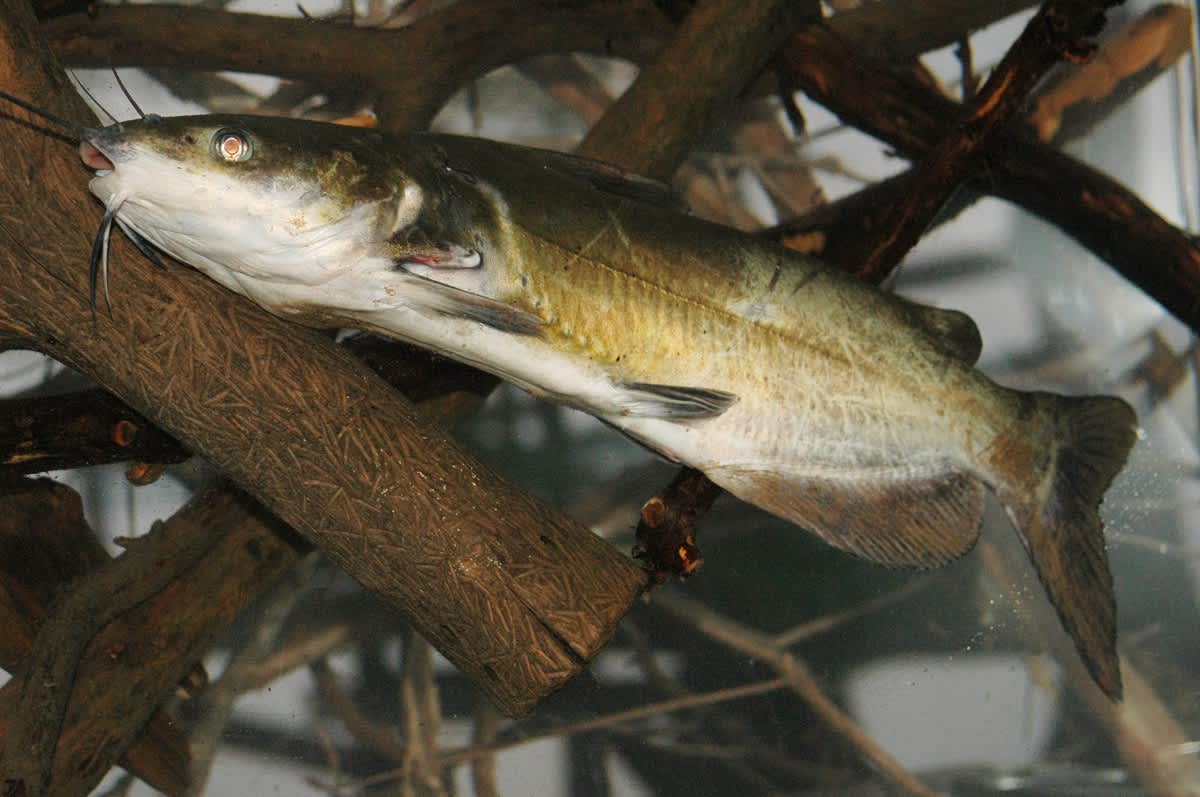How to Catch Summertime Catfish
John E. Phillips 05.23.14

Author’s note: Before using any of these techniques to catch catfish, check your state’s regulations.
I’ve enjoyed catching and eating catfish all my life, since I live in a state with four of the top 25 catfishing lakes nationwide and one of the country’s top rivers. Here’s where to locate catfish.
Small streams
Small, out-of-the-way streams, creeks, and rivers offer some of America’s finest catfishing. They often have quality populations of catfish and receive very little fishing pressure. Identify slack water and deep holes behind boulders or logs breaking the current, just below waterfalls or at the foot of shoals. Catfish usually hole up behind points or bends in the creek or stay bunched up in deep, unseen holes.

Use a portable depth finder to locate the deep holes. When fishing for cats from a canoe, remember the rounded sides and the bottom of the canoe will make the depth finder’s suction-cup transducer head shoot its signal at an angle, instead of shooting it straight to the stream’s bottom. Tape the transducer to a 2×4-inch piece of wood with electrician’s tape, and tie the wood to the side of your canoe for an accurate picture.
Farm ponds and small lakes
Farm ponds and small lakes generally hold the highest concentrations of catfish of any waters and like small streams, often receive little fishing pressure. Also check out your state’s public fishing lakes. A friend of mine tells me that to concentrate pond catfish, he throws about five pounds of cheap dry dog food out on the water to draw in two- to four-pound catfish.
Rivers
States may have specific rivers that produce numerous catfish. I asked longtime fisheries biologist Bill Reeves why. Reeves explained, “Sometimes rivers have so many catfish because the sheer size of the river provides abundant bait and cover. Also, more anglers will fish these easy-to-access areas. Overpopulation due to too little fishing pressure makes catfish underfed and underweight.”
Tactics
- Yo-yoing catches plenty of catfish. Mechanical Fisher manufactures the Yo-Yo, a stainless steel spring enclosed in a metal frame with 20-feet of coiled trotline staging and a snap swivel on the end of the line. Tie the Yo-Yo to a green limb overhanging the water. When the catfish takes the bait, the Yo-Yo’s trigger will trip.
- Fishing jugs means that once the catfish takes the bait and tries to dive, the jug will resist and set the hook deep in the catfish’s mouth, making the jug bob up and down or move. Plastic jugs like gallon milk jugs and bleach bottles are too big for jugging because the wind can blow them. I prefer the pint and quart jugs that I spray fluorescent orange to show up well. Tie lines of various lengths to your jugs. Then you can change out the lines on your jugs, if you find the catfish feeding in deeper or more shallow waters.
- Limb-lining and set poling enable anglers to fish for catfish along riverbanks with several hooks at once. Limb-lining involves tying a hook, a bait, and a weight to the green not brittle limbs of overhanging trees or bushes. You can make set-poles by sticking small green limbs or river canes into the soft earth of the bank and baiting them. Set your lines at different depths.
- Trotlining for catfish equipment includes main lines, anchors, buoys, and droplines. Anglers tie main lines to trees or bushes on riverbanks on opposite sides or to the bank and then place anchors and buoys on the ends of the lines in the middle of the lake. Trotliners attach droplines to their main lines every 18 to 20 inches and tie a hook to each dropline. Don’t forget that state regulations govern how many hooks, and what type of line they can use.
- Fishing with jump boxes involves trotlines that lie inside a square box with each line having an anchor and a float on one end and sometimes a float in the middle. The end float suspends the hooks off the river’s bottom, marks the beginning of the line and pinpoints the anchor’s location. The outer edge of the box contains hooks wedged between rubber gaskets. Jump-box fishermen throw anchors and floats out the backs of their boats as they motor forward to cause their trotlines to jump out of the boxes and sink to the bottom.
Have more fun and take more catfish this summer in these places using these tactics.
For more information on catfishing, check out the Kindle ebook How to Catfish Like a Pro, or see more of John E. Phillips’ books on his author’s page.

